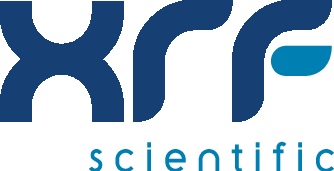Exploring the Benefits of Combined Titration Systems
Titration has long been a staple of chemical analysis, but the demands of current workflows have outgrown traditional single-purpose instruments. Combined titration systems offer a smarter way to manage multiple analytical tasks within a unified framework. Rather than isolating measurements, they streamline the process, improving consistency, reducing handling time, and allowing operations to run with greater precision and efficiency. These improvements illustrate what makes combined titration systems a valuable asset in today’s analytical environments.
What Is a Combined Titration System?
A combined titration system integrates multiple wet chemistry techniques into a single, streamlined workflow. It enables laboratories to carry out titrations alongside pH, conductivity, and ion concentration measurements using one sample and one sequence of analysis. The system typically includes automated dosing units, measurement electrodes, and sample changers, all coordinated through central software that manages timing, sequence, and data capture. Each component is configured to perform its function in a defined order, establishing consistent handling conditions across all measurements. This design allows for efficient, reproducible analysis while maintaining tight control over every step in the process.
Key Advantages of Combined Titration Systems
1. Multi-Parameter Analysis from a Single Sample
Combined titration systems are designed to perform several determinations using one aliquot. Acidity, pH, chloride, calcium, magnesium, and total hardness can all be measured in a continuous sequence, eliminating the need for multiple preparation steps or separate instruments. The result is a cleaner, more efficient process that supports both speed and reproducibility in routine analysis.
2. High Throughput with Minimal Oversight
Efficiency is built into the architecture of combined titration systems. Equipped with integrated autosamplers, coordinated measurement modules, and programmable sequencing, they process large volumes of samples with minimal input. Many setups handle over 100 samples in a single batch, continuing operations unattended without interruption. As the system manages dosing, measurement, and data capture, analysts can shift their attention to interpretation, method development, or validation work. Such autonomy helps laboratories maximize productivity without increasing workload.
3. Exceptional Accuracy and Reproducibility
Precision is built into every part of a combined titration system. Automated burettes dispense exact volumes of titrant with minimal deviation, while advanced detection methods such as potentiometric, photometric, or thermometric techniques help identify endpoints with a high degree of accuracy. When paired with well-calibrated probes for direct measurements, combined titration systems also ensure uniform conditions for every test. Together, precise dosing, sensitive detection, and stable measurement conditions uphold the reproducibility and reliability that make combined titration systems indispensable in modern analytical workflows.
4. Improved Data Consistency and Compliance
Laboratories often face inconsistencies as data becomes fragmented across separate systems. Combined titration systems resolve this issue through integrated software that collects measurements, performs calculations, and records audit trails within a single environment. Fewer manual steps reduce the risk of transcription errors and promote uniform handling across tests. A defined sequence enforces consistency at every stage. Moreover, compliance features like electronic signatures and LIMS integration maintain traceability throughout the workflow, so quality standards are met without adding extra administrative effort.
5. Scalable, Customizable Configurations
A modular design makes combined titration systems easy to adapt in response to evolving testing needs. Laboratories can start with core capabilities like acid-base titration or pH measurement, then add modules for conductivity or ion chromatography if demands increase. Expansion requires no major reconfiguration, allowing earlier investments to remain in use. Because scaling happens within a single integrated platform, combined titration systems help laboratories respond to changing requirements without interrupting workflows or adding unnecessary complexity.
6. Reduced Operational Costs
Running multiple instruments often leads to higher reagent consumption, duplicate maintenance tasks, and increased waste. Combined titration systems consolidate these processes into a single, automated platform. Fewer steps and consistent outputs reduce the need for re-tests, easing the strain on time and resources. This efficiency not only reduces recurring costs but also reinforces the utility of combined titration systems in high-throughput environments.
Who Benefits from Combined Titration Systems?
Combined titration systems are used across sectors where high-volume analysis, precision, and compliance are critical. They are especially valuable for:
- Water and environmental testing labs: Accelerating regulatory testing and simplifying the monitoring of pH, hardness, chloride, nitrate, and conductivity in a single run.
- Pharmaceutical quality control teams: Supporting the validated, automated analysis of pH, moisture (via Karl Fischer), acid/base levels, and ionic purity with full traceability.
- Food and beverage manufacturers: Ensuring consistent batch quality and accurate labelling through automated checks of acidity, salinity, and preservative content.
- Chemical and petrochemical producers: Enabling the fast, documented testing of raw materials and reaction endpoints in complex matrices.
- Academic and contract research organizations: Managing diverse testing needs cost-effectively through a single, flexible platform without relying on multiple standalone instruments.
Streamlining Workflows with Combined Titration Systems
Laboratories conducting multiple chemical measurements need solutions that combine accuracy, efficiency, and flexibility. Combined titration systems meet these demands, integrating acid-base titration, pH, conductivity, and ion concentration testing into one seamless, automated workflow. The AS3000 from XRF Scientific delivers such integration within a modular platform built to support expanding analytical needs. Reducing manual steps and streamlining workflows, the AS3000 empowers labs to achieve consistent, reliable results while improving productivity. To discover how the AS3000 can enhance your analytical capabilities, contact XRF Scientific today.




